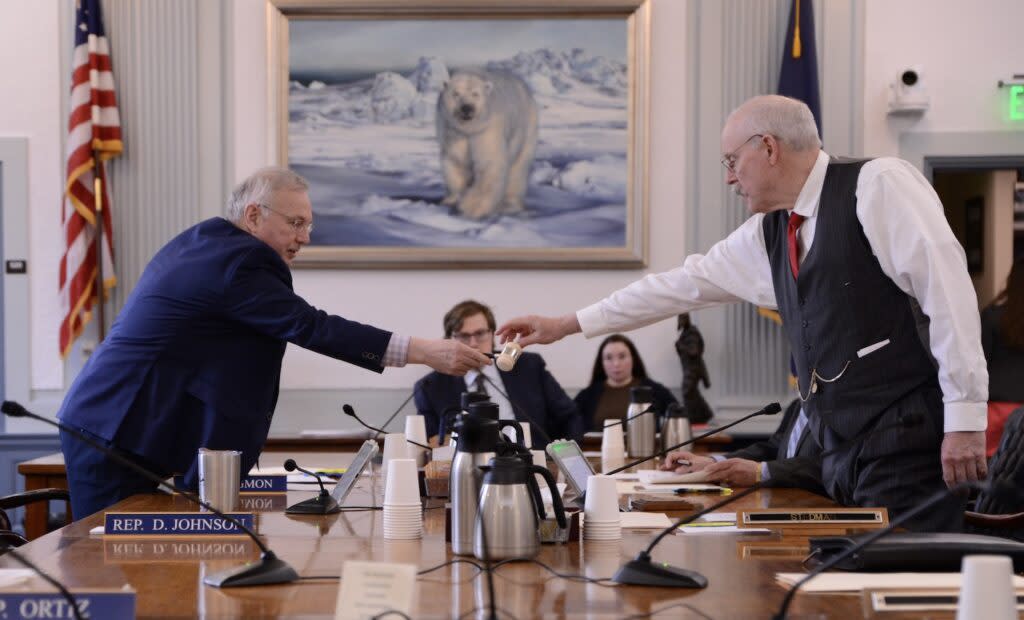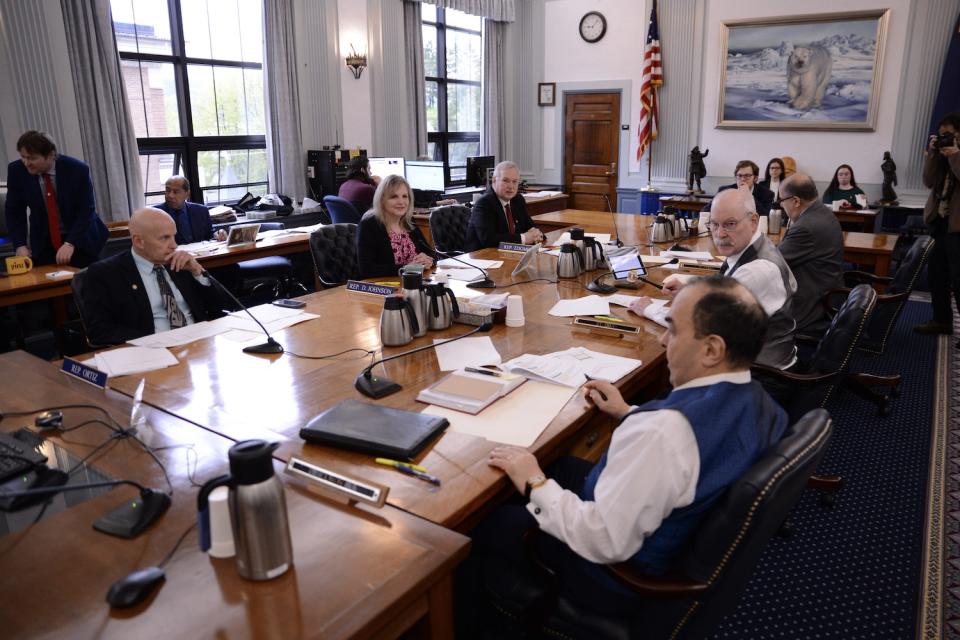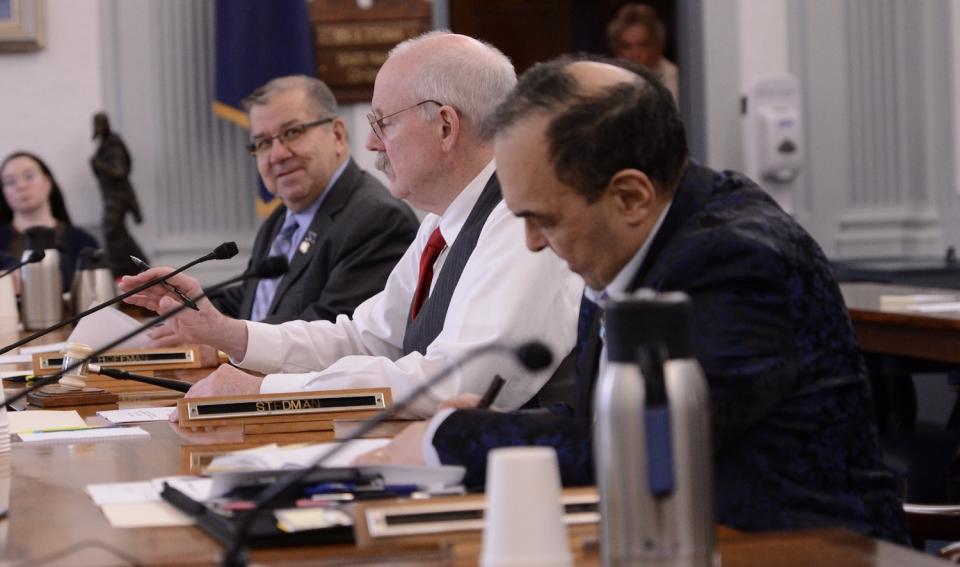Ahead of final day, Alaska lawmakers settle on PFD near $1,655 per recipient

- Oops!Something went wrong.Please try again later.
Rep. Bryce Edgmon, I-Dillingham, passes the conference committee gavel to Sen. Bert Stedman, R-Sitka, after examining it Monday, May 13, 2024. (Photo by James Brooks/Alaska Beacon)
The Alaska Legislature is close to a final vote on the annual state budget, which includes a Permanent Fund dividend of about $1,655 per recipient. The exact figure will depend on the number of approved recipients.
On Tuesday, members of a joint House-Senate conference committee completed work on a multibillion-dollar compromise state spending plan that pays for services in the 12 months beginning July 1.
House and Senate are scheduled to vote on the plan Wednesday, the last day of the regular legislative session, and advance it to Gov. Mike Dunleavy’s desk. The governor may veto or reduce individual line items.
Included in the spending plan is $175 million in bonus funding for K-12 public schools, enough to boost the base student allocation — core to the state’s per-student funding formula — by $680 per student.
On education, there’s also additional money for student transportation and $5.2 million to help K-3 students learn to read at grade level.
Among the hundreds of pages in the state budget, there’s $10 million for Alaska seafood marketing, more security for Dunleavy, and additional funding for “statehood defense,” the state’s effort to file lawsuits against the federal government on natural resource issues.

As has been the case for the past several years, the value of the annual Permanent Fund dividend was debated at length.
Last year, senators who wrote the budget said that if oil prices exceeded a specific target, some of that extra revenue would be reserved for an “energy relief” payment attached to the 2024 dividend.
“$1,360 is the base dividend … and $295 is the energy relief dividend target, for a total of $1,655,” said Sen. Bert Stedman, R-Sitka.
For the second straight year, the base dividend amount is based on 25% of the state’s annual draw from the Permanent Fund, while the energy relief is based on the state raising more in oil and other revenue than forecast.
That total figure is lower than the dividend proposed in the House’s draft budget, but Rep. DeLena Johnson, R-Palmer and this year’s lead House budget negotiator, said the final result shouldn’t be considered a “lower dividend.”
“I wouldn’t say this is a lower dividend. This was over $400 higher than last year,” Johnson said.
She said it’s also important to consider that even with a 2024 dividend bigger than the 2023 figure of $1,312, lawmakers were still able to find $550 million for construction and renovation projects in the state’s capital budget, and about $100 million will flow into savings on June 30, the last day of the current fiscal year.
“We have a solid capital budget, we have money going into savings,” Johnson said.
For several years, the state budget — and the dividend size in particular — has been the most acrimonious issue in the Legislature, frequently driving the state to the brink of a government shutdown, but that acrimony was in short supply this year.
The difference, lawmakers said, has roots in what happened last year, when divisions between members of the House caused lawmakers — for only the second time since statehood — to vote for the Senate’s budget rather than try to negotiate a compromise.
“Last year was definitely not an easy budget,” Johnson said.
“I think there was a concerted effort to make sure that that didn’t happen this year. And that started from Day One,” she said.

House and Senate leaders negotiated a detailed schedule of budget work and an agreement that lawmakers would not try to combine various budget bills into a single document.
They kept to that schedule throughout the legislative session.
Rep. Dan Ortiz, I-Ketchikan and a member of the minority caucus, was a member of the conference committee that negotiated the final version of the budget.
Early on, he said, there was a recognition that lawmakers weren’t willing to overspend from the Permanent Fund or spend the state’s Constitutional Budget Reserve in order to boost spending.
That constrained the amount of money available to lawmakers, and it means that only 21 votes are needed to pass the budget in the House.
“I think as much as some people in the House would have liked to have seen a higher PFD, the reality was, the money just wasn’t there,” Ortiz said.
GET THE MORNING HEADLINES DELIVERED TO YOUR INBOX
The post Ahead of final day, Alaska lawmakers settle on PFD near $1,655 per recipient appeared first on Alaska Beacon.

